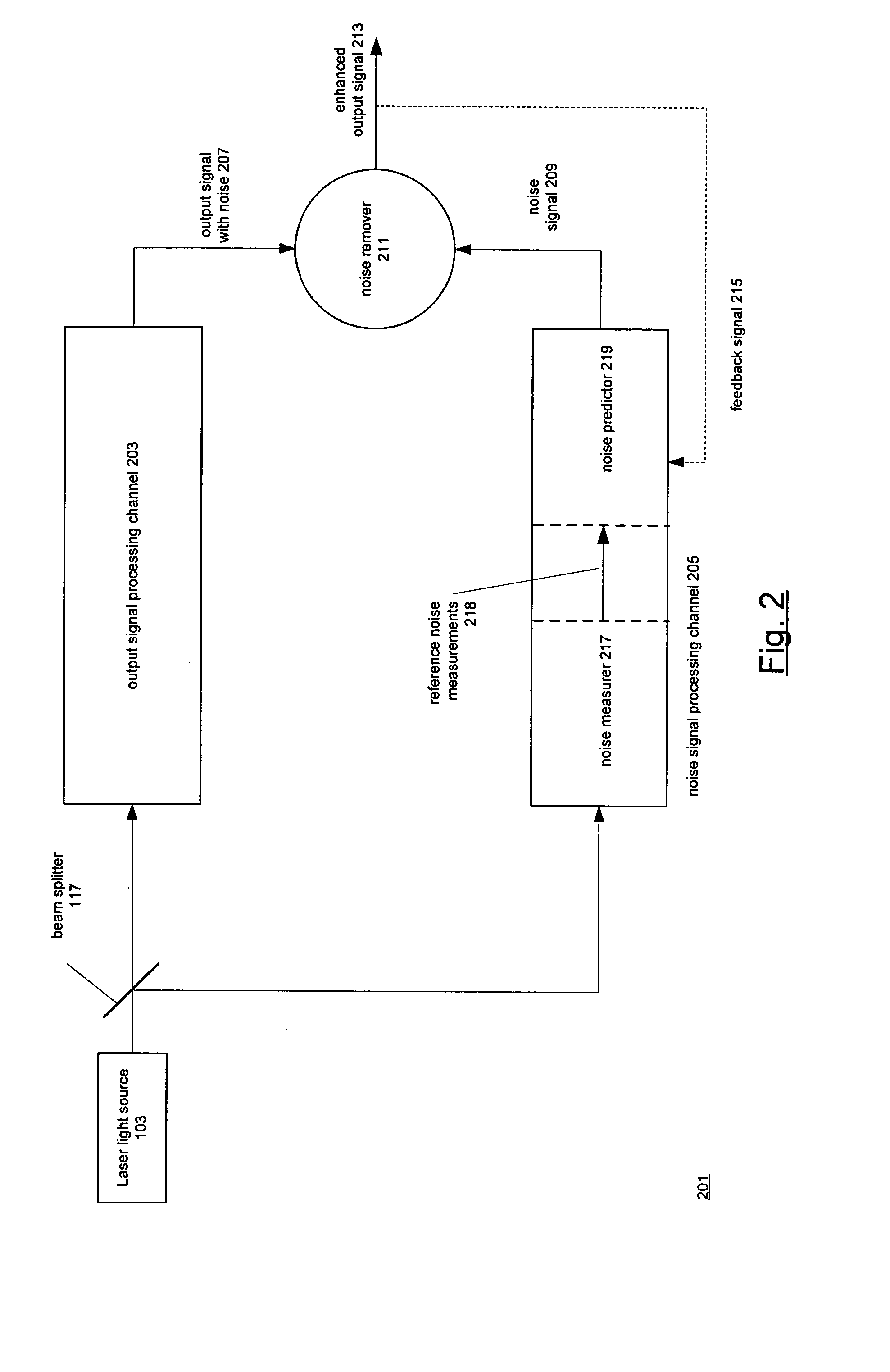Apparatus for correcting for the effects of laser noise
a technology of laser noise and mask, applied in the field of mask, can solve the problems of noise component, noise, etc., and achieve the effect of reducing the noise component and enhancing the output signal
- Summary
- Abstract
- Description
- Claims
- Application Information
AI Technical Summary
Benefits of technology
Problems solved by technology
Method used
Image
Examples
Embodiment Construction
[0024]The following Detailed Description will first present a conceptual overview of the invention and will thereupon describe how the invention may be embodied in a CPT atomic frequency standard.
Overview of the Invention: FIG. 2
[0025]An apparatus such as CPT frequency standard 101 which produces an output that is dependent on input from a laser light source can be regarded at the highest level as an output signal processing channel which receives input from the laser light source and produces an output signal that depends on the laser light source. In system 101, rubidium vapor cell 105, photodetector 107, and signal processor 111 are components of the output signal processing channel. Noise in result signal 111 may result not only from laser light source 103, but from any other component in the output signal processing channel.
[0026]System 201 of FIG. 2 contains such an output signal processing channel 203. Channel 203 receives light from laser light source 103 and produces an out...
PUM
 Login to View More
Login to View More Abstract
Description
Claims
Application Information
 Login to View More
Login to View More - R&D
- Intellectual Property
- Life Sciences
- Materials
- Tech Scout
- Unparalleled Data Quality
- Higher Quality Content
- 60% Fewer Hallucinations
Browse by: Latest US Patents, China's latest patents, Technical Efficacy Thesaurus, Application Domain, Technology Topic, Popular Technical Reports.
© 2025 PatSnap. All rights reserved.Legal|Privacy policy|Modern Slavery Act Transparency Statement|Sitemap|About US| Contact US: help@patsnap.com



